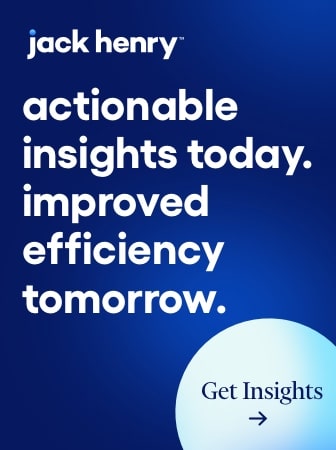LAS VEGAS — Perhaps it’s common sense: Customers who feel financially stable are more likely to stay with the financial institutions that helped get them there. For bank marketers, fostering that loyalty presents a huge opportunity to increase customers’ lifetime value, according to Vibhas Ratanjee, senior practice expert of finance at the research-based consulting firm Gallup.
That customer confidence doesn’t stop growing either, Ratanjee told attendees in a Wednesday session at The Financial Brand Forum 2024. The more financially stable consumers feel, the more likely they are to deposit more, explore lending and investment opportunities — in turn, boosting the bottom line for banks and credit unions.
“There is power in impacting and ensuring financial wellbeing,” Ratanjee says. “We sometimes focus on the outcome which is cross-sale … But we need to understand the person behind the customer.”

Industry Cloud for Banking from PwC
PwC’s Industry Cloud for Banking applies our deep industry knowledge to your specific business needs.

Register for Discovery2024 Conference
Join us August 8th for Discovery2024, your gateway to the strategic insights and human connections you may need to navigate the evolving financial landscape.
Financial Well-being Goes Beyond Mere Financial Health
Naturally, banks and credit unions are focused on their members’ and customers’ financial health. But financial wellbeing goes beyond that.
“Financial health is just facts. Financial well-being is a person’s emotional relationship with money. You can be poor or just reasonably okay in your income and still feel like you get a lot of enjoyment out of that money,” Ratanjee says. “We’re trying to create financial bonds at a time that is characterized by worry, stress and emotional dysregulation. So it requires a lot more effort.”
“There is power in impacting and ensuring financial wellbeing. We sometimes focus on the outcome which is cross-sale … But we need to understand the person behind the customer.””
— Vibhas Ratanjee, Gallup
Learn more: Cracking the Customer Code: Marrying Emotion and Tech to Maximize ROI
Only 25% of bank customers strongly agree their bank looks out for their financial wellbeing, according to Gallup data. That said, when they do feel they’re truly being taken care of, 73% are fully engaged, the data show.
One way to head in the right direction: Categorize financial health as the outward self, where financial wellbeing represents the inward self.
To accomplish that, it’s important for banks and credit unions to define exactly what they can offer customers beyond helping them maintain a standard of living through budgeting and financial planning, for example. Ratanjee notes customers are instead looking to have a more emotional relationship with their money: they seek confidence, enjoyment and minimal worry. Those feelings are no longer nice-to-haves for customer relationships, but instead, fostering them is essential to growth.
Conditions that should be fulfilled for fostering financial wellbeing by FIs:
- Looks out for my financial wellbeing
- Understands my financial situation
- Makes it easy for me to manage their finances
- Has my best interests at heart
- Offers solutions to meet my financial needs
- Helps me make better financial decisions
Converting Customer Support into a Growth Strategy
The Gallup data surfaced three main steps to supporting customers’ wellbeing: High channel consistency, high digital adoption and high quality conversations.
Working with multiple channels can increase worry among customers. Consistency across these channels — no matter how many there are — is key, Ratanjee says. Instead, the focus should be not on the number of channels but the experience across them. This doesn’t mean banks and credit unions should avoid investing in and innovating new channels, but building a positive experience across them is crucial.
“Invest in new channels but don’t forget to create the golden thread between these channels and how they operate,” Ratanjee says.
And don’t forget an important component: Educating customers on how to actually use these channels. “If you’re introducing digital interfaces and not doing enough training, that is not really creating an impact. Do you have a digital education program for your members and customers?” he says.
Education is key to adoption, which is key to growth. “If you’re not educating, if you’re not helping your members and customers see the value of all these new fancy tools that we put out, it’s not worth much,” Ratanjee says.
“Just one conversation focused on financial wellbeing, if done poorly, can lead to rapid customer attrition.”
— Vibhas Ratanjee, Gallup
The actual conversations banks and credit unions have with their customers can make or break their financial wellness strategies. How problems are managed directly affects the customer experience. For example, the data show a majority of problems customers face come from two areas: digital and fraud. “If you’re not meaningfully addressing these problems in a way that is satisfactory in your customers, you will see a drop in engagement,” says Ratanjee.
“Just one conversation focused on financial wellbeing, if done poorly, can lead to rapid customer attrition,” he notes. And, banks need to remember that no matter how digitally-savvy their set up is, ultimately customers will have to have face-to face conversations about complex transactions like mortgages and investing. That requires actually getting to know the person behind the customer, Ratanjee says.
“It’s not about your banker showing a lot of product knowledge, it’s about how much knowledge you have of the member when you meet,” Ratanjee says. “You need to transition people to be customer needs experts, not just product experts”
The Biggest Investment in Customer Wellbeing: Your People
It’s all well and good to say you have a robust financial wellbeing program, Ratanjee says. But that simply must be translated into the training customer-facing employees receive and their ability to communicate with members and customers.
“What is unique about your brand and purpose and how are you investing? Financial wellbeing is in the mission statement of most banks and credit unions. But you need to think about what it actually means and how you actually operationalize it,” Ratanjee says.

Currently, only 25% of employees say they have at least one meaningful conversation a week with their manager, 75% don’t. But coaching doesn’t just simply happen.
“Coaching is incredibly important — and some managers are fantastic. Some are not,” Ratanjee says. “You need as an FI to develop coaching as an operating discipline where you’re actually empowering and enabling people to have those conversations.”
The biggest investment a bank or credit union can make, Ratanjee says, is in their people. That is the essential key to developing a tried-and-true financial wellbeing program.
“Financial wellbeing is not just about positioning, advertisement or having 2-3 pages on your website that talk about financial health. It’s about investing in the experiences that your customers have every day,” he says.
Madeleine “Maddy” Perkins (she/her) is the managing editor for The Financial Brand. Her award-winning work has appeared in American Banker, Financial Planning, MarketWatch and more. She is based in Hoboken, N.J. and holds an M.A. in journalism with an emphasis on business and economic reporting from the Craig Newmark Graduate School of Journalism at CUNY. Follow Maddy on X @perkedit.







